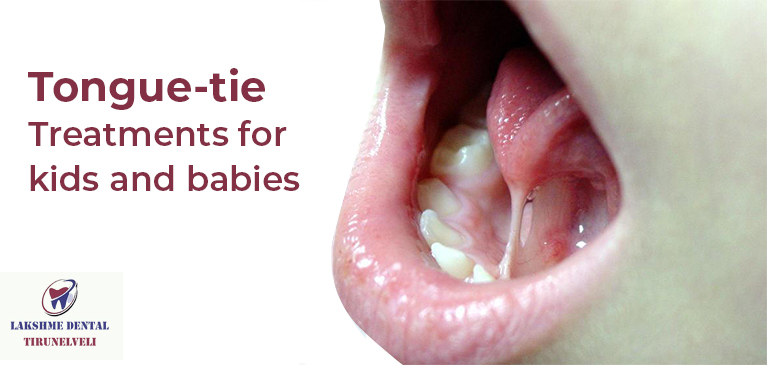
Tongue-tie Treatments for kids and babies
Does your kid strain much to express certain speech sounds and encounter pronunciation difficulties? Do you sense pain during breastfeeding? If your answer is YES for both the questions, then your little champ might have an amiss in tongue called “Tongue-tie”.
Tongue-tie (clinically known as Ankyloglossia) is a condition that limits our tongue movements with the embryological remnant of a tissue Called lingual frenulum. This is a midline that connects the tongue’s bottom surface and floor of the mouth.
Our tongue should reach almost every part of our mouth for activities like making sounds, swallowing. Babies with tongue-tie have a small stretch in the frenulum and it ends in inhibiting the tongue movements.
Besides speech impairments, the tongue-tie’s aftereffects are extended more than you think. It can lead to problems in breastfeeding, causing problems in both the infant and mother.
How can you detect whether your kid has a tongue-tie?
The exact cause of ankyloglossia is not yet unknown and the researches are still going. As Tongue-tie interferes in breastfeeding, it explicits various signs since infanthood in both the kid and mother as follows:
Baby’s signs
- Poor weight gain
- Frequent crying
- Short sleep patterns
- Fussy baby
- The baby tends to eat often
- Produce clicking sound while feeding
- Stuttering
- Striving hard to pronounce sounds and letters like D, G, L, M, N, R, S, T, Z, CH
Mother’s symptoms
It includes a mom’s hardships provoked with difficulties in feeding a baby born with tongue-tie.
- Nipple pain
- Poor latch
- Cracked nipples
- Feeding takes a long time
Remember that these problems will lead to issues with milk supply and eventually end in weight gain.
Is there any treatment available to fix tongue-tie?
Yes. You can have different treatment options to address ankyloglossia.
Whether it is a pediatric dentist or speech therapist, the care providers conclude after a physical test to identify the degree of tension in the frenulum.
The problem goes on its own for some people whereas certain cases require surgical procedures to release the tongue or lip tie. The surgical release of tongue-tie involves 2 methods.
- Frenotomy – The simple surgical procedure that can be performed without anesthesia. The dental doctor uses a sterile scissor to clip the frenulum. The connective tissue has few nerve endings and hence you see only a few drops of blood.
- Frenuloplasty – If the abnormally attached lingual frenulum is too thick and it cannot be addressed with frenotomy. The procedure also involves cutting the midline but requires invasive surgical instruments.
Besides the mentioned surgical procedures, various treatment options available to get rid of tied tongue or lips consequences include lactation interventions, craniosacral therapy, and motor therapy.
Bottom line
To be precise, consult your doctor when you identify a kid is unable to utter some letters or has feeding issues. It is a red flag indicating your baby has speech alteration problems. Moreover, untreated tongue-tie is linked to teeth misalignment problems for some babies when they reach adulthood.
Apart from pediatric dentists, you can get tongue-tie treatments from physicians like Gynecologist, EN specialists, and Myofunctional trainers.










